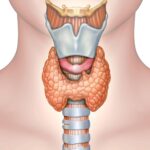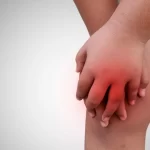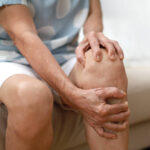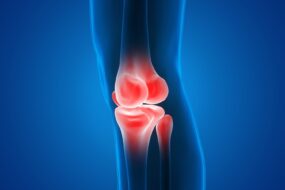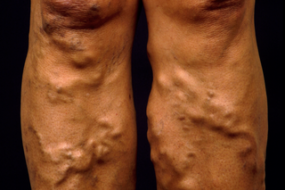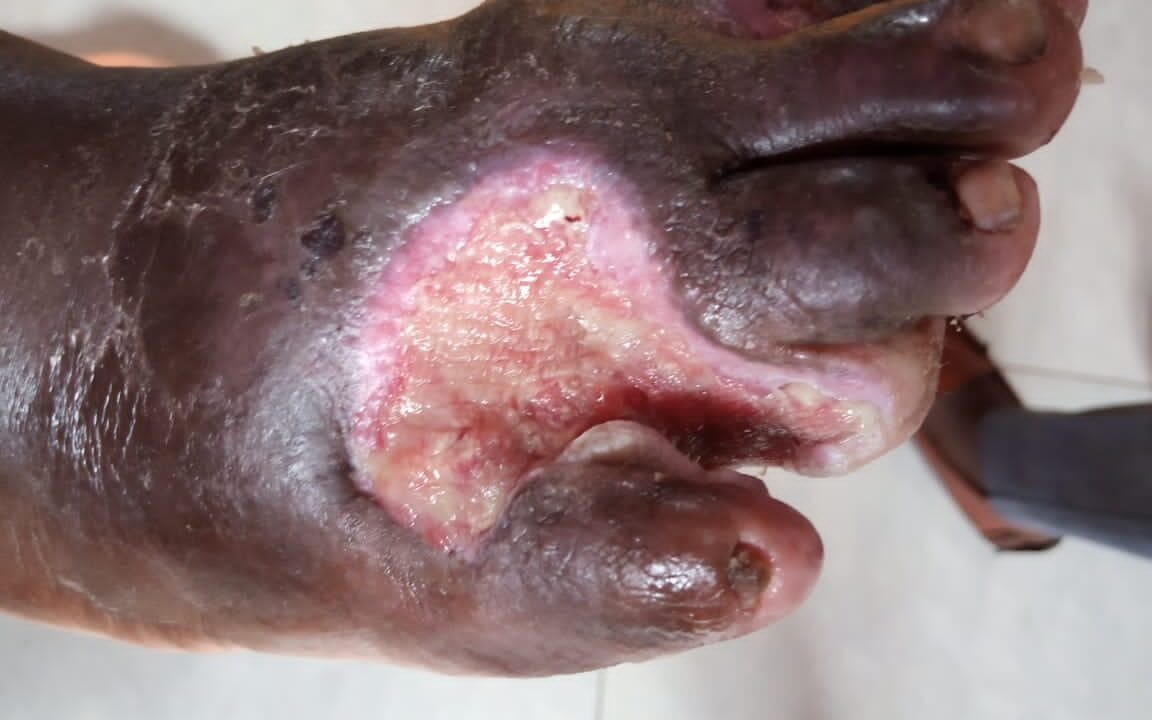
Diabetic foot is a common complication in patients with long-standing diabetes mellitus.
Etiology
Diabetic foot problems occur as a result of
- Neuropathy
- Ischemia secondary to peripheral vascular disease
Both factors may play a role or a single factor, most commonly diabetic neuropathy.
Ischemia only accounts for a smaller percentage of diabetic foot problems.
Examples of diabetic foot problems.
- Foot ulceration. It can be secondary to trauma
- Charcot neuroarthropathy.
Of note is that Charcot neuroarthropathy can be caused by any condition that causes neuropathy, for example.
- Syphilis
- Spinal cord injury
- Syringomyelia etc.
Clinical presentation of diabetic foot problems
Based on neuropathy or ischemia, patients can present with
Neuropathic symptoms
- Paraesthesia
- Pain
- Numbness
- Ulceration
- Sepsis
- Abscess formation
- Osteomyelitis when the bone is involved
- Gangrene
- Charcot joint
Ischemic symptoms
- Claudication
- Rest pain
- Ulcer formation
- Sepsis
- Gangrene
It is important to remember that there can be an overlap of both neuropathy and ischemia. Infection occurs as a secondary phenomenon following the disruption of the protective epidermal barrier.
Foot ulcers mostly develop at the site of a callus skin plaque, beneath which tissue necrosis occurs and eventually breaks through the surface.
Charcot neuroarthropathy is a progressive condition affecting bones and joints characterized by
- Early inflammatory changes lasting about 3-6 months.
- Hot
- Red
- Swollen
- Joint subluxations
- Joint dislocations
- Pathological fractures of the foot
- Deformities in the foot
Patients may also present with clawing of the toes, putting them at risk of increased callus formation and foot ulceration.
Work up for a patient with a diabetic foot problem.
- HbA1c. To determine the degree of glycemic control. This gives a good marker of wound healing since hyperglycemia impairs wound healing.
- Random blood sugar. It is necessary to determine the degree of glycemic control.
- Fasting blood glucose. It is necessary to determine the degree of glycemic control.
- Complete blood count.
- Leukocytosis is evident in the presence of an infection.
- Important to determine whether there is anemia or not since anemia can impair wound healing.
- Urea, electrolytes, and creatinine. Necessary to check for renal function since diabetic patients are at risk of diabetic nephropathy.
- Liver function tests, especially serum albumin. This is so since low levels are associated with poor wound healing.
- Inflammatory markers, for example
- Erythrocyte sedimentation rate
- C reactive protein
They are elevated in a setting of infection or when there is bone involvement (osteomyelitis).
- Swabs of wounds and cultures in patients who present with ulcerations. Cultures should be accompanied by an antimicrobial sensitivity test to choose the right type of antibiotic suitable for each patient only in an infection setting.
- Ankle-brachial index. Useful to determine the risk of peripheral artery disease.
- Imaging too has a role in the workup of these patients, and they include
- Plain limb x-rays. It may show deformities, dislocations, subluxations, and bony abnormalities.
- Magnetic resonance imaging. Very useful to differentiate an ulcer of the Charcot joint and osteomyelitis.
Note: 40% of patients with Charcot’s joint have a foot ulcer.
- CT angiography. Used to check for the status of the lower limb vessels and rule out peripheral vascular disease as a cause of foot ulceration
- Doppler ultrasound. To rule out any vascular involvement.
- Magnetic resonance angiography. It can be used as an alternative to CT angiography.
Risk assessment and management of diabetic foot problems
| Low risk | Moderate risk | High risk | Active disease |
| Normal sensation Present foot pulses | Impaired sensation No skin callus No foot deformity Patient’s inability to self-care for feet. | History of a previous ulcer History of amputation Impaired sensation Absent foot pulses | Current foot ulcer Infections Critical ischemia Gangrene Unexplained hot, red, swollen foot |
| PLAN | |||
| These patients require annual screening by healthcare professionals. | These patients require annual assessment by a podiatrist | These patients require annual assessment by a podiatrist. | These patients require urgent referral to a specialist team. |
Management of diabetic foot problems
Divided into
- Primary prevention
- Treatment of active disease
Prevention of Diabetic foot Problems
Include
Strict glycemic control
Advice to all diabetic patients on feet care, which includes
- Daily feet inspection to avoid diabetic foot
- Washing of the feet every day
- Skin moisturizing when dry
- Ensuring proper nail hygiene by cutting and filing toenails regularly
- Changing socks and stockings every day
- Avoiding walking barefooted
- Checking footwear for any foreign material before wearing it.
- Wearing suitable, well-fitting shoes
- Covering minor cuts with a sterile dressing
- Avoiding bursting of blisters
Moderate and high-risk patients
- Should not attempt to remove corns
- Avoid high and low temperatures
Specially manufactured and fitted orthotic footwear is integral to preventing ulceration recurrence and protecting the feet of patients with Charcot neuroarthropathy.
Active disease
Wound ulceration
Multidisciplinary approach including
- Physician
- Podiatrist
- Vascular Surgeon
- Orthotists
Dead tissue is debrided.
Antibiotics only when necessary, for example, in the presence of an infection which can accelerate necrosis and the development of gangrene.
Wound dressing using sterile material
In severe diseases, amputation is necessary.
Charcot’s foot
The mainstay of treatment is immobilization and ideally avoiding weight bearing on the affected foot.
Using total contact plaster or ‘air cast’ boot


